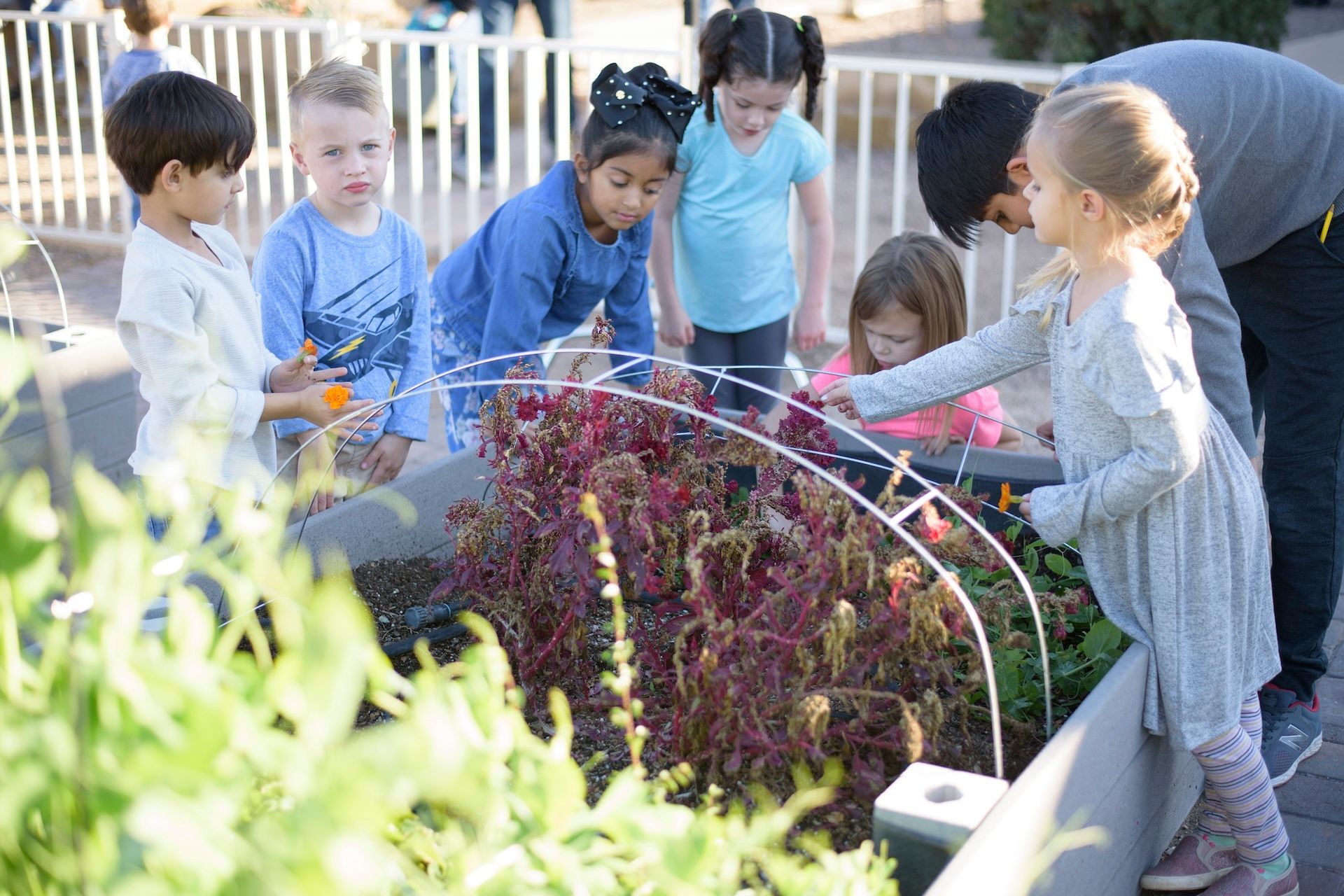The Child and Nature
Taking a walk outdoors with a young child invites a very different, but nonetheless rewarding perspective. When walking with my granddaughter, the first thing I must do is to shift into what I call “Penelope time”, where our walk immediately slows to a stroll, full of important stops and starts. As we begin, I am first struck by the amazing abundance of rocks and pebbles, each one calling out to be examined and stored in every compartment of the baby stroller I am pushing. A little farther down the sidewalk, a tiny grasshopper is discovered, noticeable only by someone very compact and near to the ground. She pauses to touch it ever so gently, excited to see it jump, not once, but 3 times! Just around the corner, I point out a porch covered with elaborate fall and Halloween decorations, but the enormous sycamore leaves that have dried and fallen to the ground are far more interesting – they, too, join the rock collection at the bottom of the baby stroller. On the driveway up ahead, an empty wasp nest rests on the pavement, proving to be the greatest find of the day. More interesting than a playroom full of toys, it brings about huge excitement, and a plan is immediately made to share this discovery with classmates at school the next day.
Montessori spoke directly to the importance of children having contact with nature: “There must be provision for the child to have contact with nature; to understand and appreciate the order, the harmony and the beauty in nature.” Spoken decades ago, her views are echoed by Richard Louv, author of bestseller The Last Child in the Woods: Saving Our Children from Nature-Deficit Disorder . Louv cites urban living, homework, scheduled activities, television, electronics and “stranger-danger” as reasons for today’s child’s lack of connection to the natural world.
Through his 15-year study of the relationship between humans and nature, Louv observes that “nature calms us, helps us focus, and excites our senses.” Additional research has shown that contact with nature supports the psychological well-being of children and reduces the symptoms of Attention-Deficit Disorder. Studies of children with access to school settings similar to Montessori’s “outdoor classroom” have also reported academic gains, as well as improvement in problem-solving and critical thinking skills.
As an investment in the health of our children and their future stewardship of the Earth, Louv encourages us as parents and educators to launch a “NO CHILD LEFT INSIDE MOVEMENT”. In Montessori’s words,
“Let the children be free; encourage them; let them run outside when it is raining; let them remove their shoes when they find a puddle of water; and, when the grass of the meadows is damp with dew, let them run on it and trample it with their bare feet; let them rest peacefully when a tree invites them to sleep beneath its shade; let them shout and laugh when the sun wakes them in the morning as it wakes every living creature that divides its day between waking and sleeping.”
Resources:
The Last Child in the Woods: Saving Our Children from Nature-Deficit Disorder, by Richard Louv
http://mariamontessori.com: A Classroom without Walls – Deepening Children’s Connections with Nature
www. montessoriservices .com/ideas-insights : Daddy What Does a Forest Look Like?
http://www.montessoriservices.com/ideas-insights/go-outside-and-play
Programs
Connect
Parents
Phone: (502) 640-8585
10263 Champion Farms Dr.
Louisville, Kentucky 40241 USA
Student Records Request
Please email Rachel Flavell
office@msl-edu.org
Montessori School of Louisville
Montessori School of Louisville






